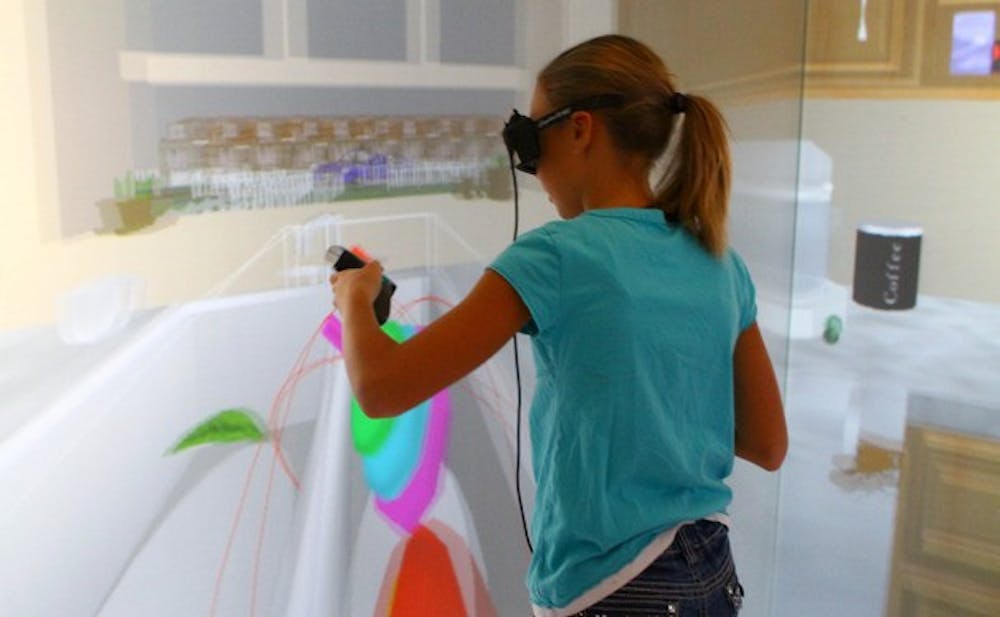The Duke Immersive Virtual Environment will close for renovation in late September.
DiVE, which provides an immersive three-dimensional virtual reality experience for use by Duke students and faculty, has not been fully renovated since its opening in 2006. The overhaul—which is set to wrap-up in early Spring—will include the installation of new projectors, a more powerful computer cluster and an upgraded tracking system—intended to provide DiVE with higher quality images for research and visualizations. Funds for the renovation come from a National Science Foundation grant.
“The DiVe has been operating for eight years, since 2006, and it has never had a major upgrade,” DiVE Director Regis Kopper said. “It’s ending its lifetime, so we’re going to upgrade.”
The most visible portion of the DiVE renovations will be twelve new high-definition projectors to replace the six currently in use. These new projectors will create images that are almost four times as detailed as the images currently projected in the facility, Kopper said. The upgraded resolution will allow researchers to immerse subjects in more realistic situations.
“Right now, the displays are a bit on the cartoony side,” said Kevin Labar, professor at the Center for Cognitive Neuroscience and researcher at DiVE. “We’re hoping that we can enhance the realism going into these displays so that we can simulate real world context better.”
In addition to the higher resolution projectors, a new computer system will also help to make the renovated DiVE more immersive. The upgraded computers will have hardware that can adjust images to hide seams, edges and other discontinuities in the virtual environment, said David Zielinski, research and development engineer for the Pratt School of Engineering.
“If there’s a line on one screen, you want that line when it matches up with the other screen to match exactly,” Zielinski said.
The upgrades will also enhance DiVE’s capabilities as a data visualization tool. DiVE is currently used to explore molecular and medical imaging data, but the relatively low resolution of DiVE images limits the level of detail which can be shown in visualizations, Kopper said. The upgrades to the facility will allow data sets to be displayed with a much higher level of detail.
“If you have many data points that you need to see, then having a higher resolution can really be beneficial,” Kopper said. “We’re going to be able to show data at a much higher detail.”
Students and faculty will have access to a number of visualization tools in place of DiVE while renovations are conducted, according to an email sent to Pratt students. These include two Oculus Rift headsets, which create immersive virtual environments through displays inside the headset, and a zSpace desktop virtual workbench, which can display interactive 3D images.
Funding for the upgrades will come from a $400,000 National Science Foundation grant as well as from University funds, which will match 30 percent of the grant.
Get The Chronicle straight to your inbox
Signup for our weekly newsletter. Cancel at any time.

